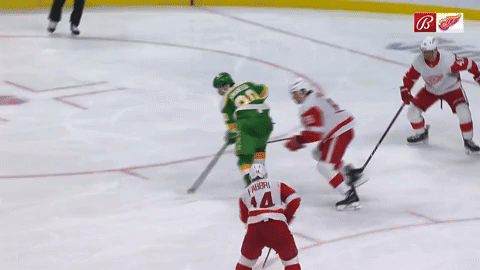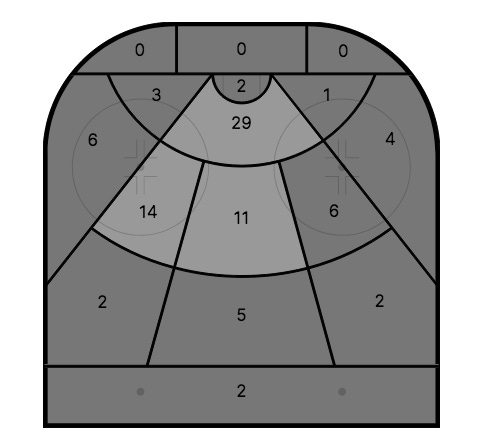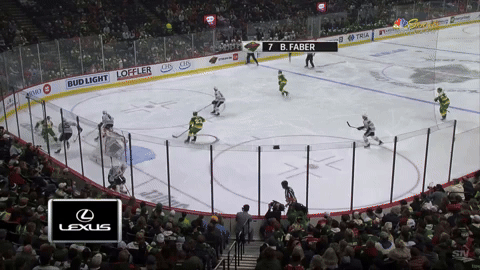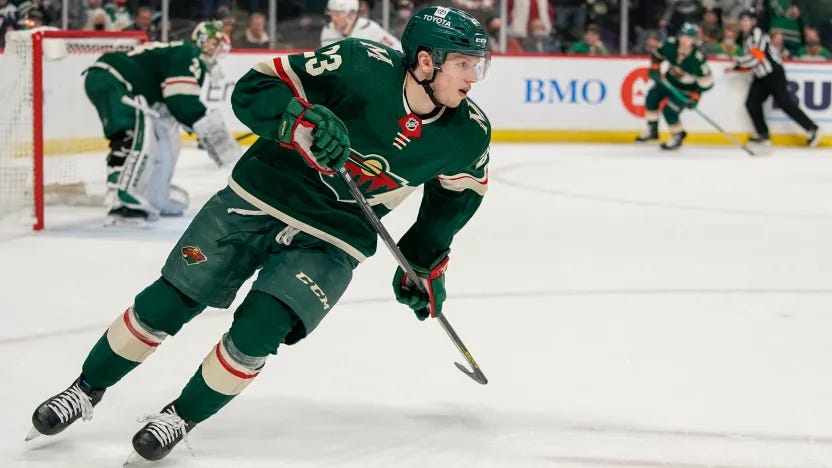
A messy season in Minnesota has the 21-21-5 Wild sitting four points outside of a wild-card berth. Even if they rally into the postseason, they’re unlikely to make much noise. Lost in the persistent injury problems, shabby goaltending and coaching change, however, are a few silver linings:
Joel Eriksson Ek has firmly established himself as a world-class two-way forward.
Defenseman Brock Faber is delivering more all-around value than any first-year player in the league.
The team’s other rookie is performing quite well too.
Although Marco Rossi hasn’t garnered Faber-level Calder Trophy hype, the young center has shaken off his own health issues to emerge as a viable top-six pivot on a club that’s been crying out for one.
Here’s how the 2020 ninth overall pick has turned the corner.
Puck Pursuit
Rossi’s breakout campaign is the product of his nose for the puck. He buzzes around it in the offensive zone, setting the table for his teammates via doggedness at the point of attack.
What’s most impressive about this development is his ability to obtain possession despite very real physical shortcomings. The 22-year-old is undersized (5’9”, 182 lbs) and an entirely ordinary skater (top speed in the 55th percentile), yet he routinely exits the pile with the puck on his stick.
That boils down to angles and anticipation. His right-place, right-time habits act as a thorn in the side of larger opponents:
Unlike diminutive puck hounds who crash and bang amidst the trees (e.g. Tyler Motte), Rossi approaches engagements with an awareness of his limitations. He doesn’t bark or bite or bother to lock horns in 50/50 duels because announcing his presence early—at his size—almost guarantees defeat.
Instead, he leans on stealth, frequently sneaking up on defensemen from behind to ruin their retrievals. He’s also diligent about fighting off their stick first, either lifting or tying it up before attempting to steal the puck in earnest.
It doesn’t feel as though he has the tools to be such a nuisance, but he’s become adept at throwing a wrench in the opposition’s plans.
Rossi doesn’t need to come away with possession himself to make his mark either. Pestering puck-carriers as consistently as he does opens the door for his linemates to swoop in and capitalize on the clutter:
On this sequence, Rossi demonstrates his grasp of when to intervene. Instead of reacting as soon as possible with the hockey equivalent of an arm tackle (i.e. a hopeless reach), Rossi waits for Robby Fabbri (DET 14) to cross his face, giving him a cleaner look at the biscuit. From there, he nicks just enough of his counterpart’s shaft and the puck to knock it free—and onto Marcus Johansson’s (MIN 90) blade.
Rossi is the rare 5’9” forward who can play long. Better yet, he’s deeply competitive and won’t quit on pucks. Consequently, the Wild spend more time in the OZ than anywhere else during his 5-on-5 shifts:
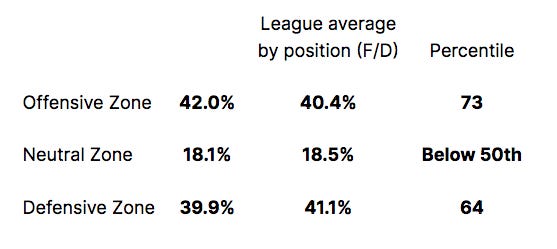
Given Minnesota’s struggles to dictate play at even strength (19th in xGF%), its rookie’s gift for sniffing out pucks, regaining possession and facilitating offensive touches is all the more impressive.
Efficient Offense
In the OZ, the stylistic comparable that springs to mind for Rossi is Devils captain Nico Hischier. Slight build, versatile if unspectacular skill set, willingness to dig in the trenches, etc. Above all else, their decision-making is rather plain and…just plain smart.
You won’t see a whole lot of cross-ice, thread-the-needle sauce from Rossi. He prefers good old point-A-to-point-B passes that extend the play and enable Minnesota’s biggest threats to work their magic.
Once the offense is in their hands again, he concentrates his attention on spacing. The freshman displays a natural feel for getting open in close quarters, sinking away from traffic only to resurface as a feed enters the slot. Despite his inexperience and general lack of sizzle, he boasts the instincts to provide the Wild’s playmakers with attractive targets on a regular basis:
Rossi doesn’t shine in any particular department but can acquit himself nicely in most of them. Flanked by Kirill Kaprizov and Mats Zuccarello of late, that utility is translating to trigger-man status in prime real estate.
Consider his shot chart and high-danger metrics:
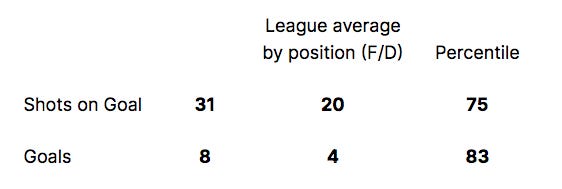
Beyond his clever routes and solid puck skills, the Austrian is chippier than people realize too. Opponents can doubtless manhandle him in net-front scenarios, but he won’t shy away from Round 2. Whether you win them or not, entering these skirmishes—thus occupying defenders and obstructing sightlines—is immensely valuable to an offense.
Especially at even strength, Rossi’s eagerness to muck it up in the goalmouth represents a force multiplier.
Every volley is that much more dangerous:
Watch how he tracks the action vs. the Blackhawks. With Zuccarello (MIN 36) rolling up the half-wall, Rossi offers central puck support in case his winger requires a link-up or extra body to balance the scale. Upon Faber’s (MIN 7) pass reception at the point, Rossi’s priorities turn toward traffic, swiftly claiming the depth and lane that will most bother Chicago’s netminder. Tip —> goal.
Although there’s nothing sexy about his off-puck tendencies, they’re textbook. He simply understands where his teammates need him to be in most situations. If those teammates happen to wield talent, that formula can yield stellar output:
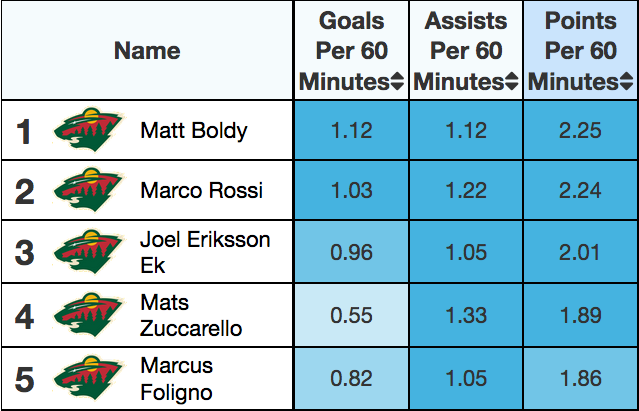
At 5-on-5, he ranks third on the team in high-danger chances and expected goals. He’s second in points per 60 minutes and first in individual points percentage (85.7 IPP), which suggests he’s not merely producing well but is a critical component of that production.
Among rookies leaguewide, he’s tied for second in points (28 in 47 games) behind some guy named Bedard.
The reservations you might have had about the 22-year-old no longer seem to apply. He’s holding up against grown men down low. He’s producing at the pro level. He’s becoming a major contributor in his first full season.
Following fits and starts to begin his NHL career, Rossi’s trajectory is finally clear for takeoff.




